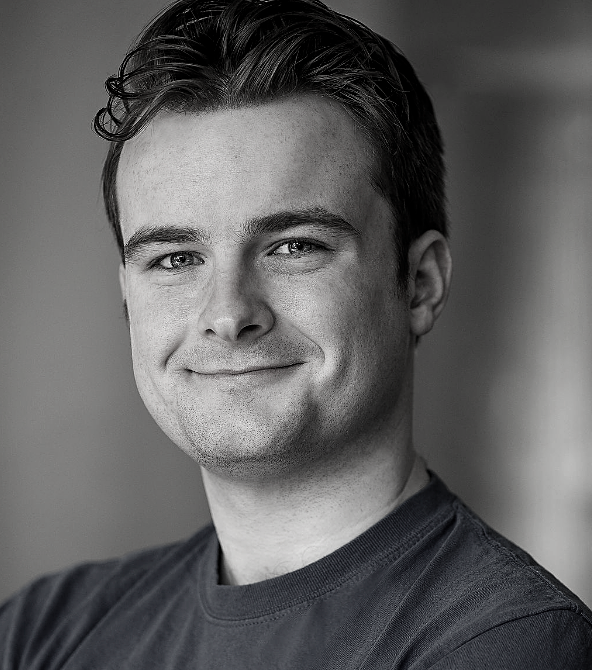REVIEW: William Kentridge’s visually extreme Wozzeck disorients at the COC
In a Q&A published by the Canadian Opera Company (COC), the prolific South African artist William Kentridge made a claim with the potential to rile opera traditionalists: “I think one could… watch a great version of [Alban Berg’s Wozzeck] simply by putting your fingers in your ears and reading the surtitles and doing kind of nothing else.”
This view of Berg’s music as just one element in a broader puzzle comes through in Kentridge’s dense take on the opera, playing at the COC in a co-production with the Metropolitan Opera, Opera Australia, and the Salzburg Festival (where it premiered in 2017). The production’s defining feature is a partially animated collection of projected charcoal drawings that blankets the stage for the vast majority of its 90-minute runtime. It’s a somber visual thicket that proves almost overwhelmingly complex, making for a rewarding but highly disorienting operatic experience.
Berg’s opera closely adapts Georg Büchner’s influential 1830s play Woyzeck, retaining much of the original dialogue. Though he’s already in a fragile, exploited state from the beginning, the titular soldier (baritone Michael Kupfer-Radecky) begins to lose all mental grounding after he discovers that his lover Marie (soprano Ambur Braid) has been meeting with the charismatic Drum Major (tenor Matthew Cairns). Berg fragments this otherwise straightforward narrative of descent into 15 serialized vignettes.
The composer served in the Austro-Hungarian army from 1915 to 1918, toward the beginning of his work on Wozzeck, and Kentridge transposes the action to the First World War. Many of his drawings directly reference wartime imagery: landscapes cut through with barbed wire, buildings blown to pieces, a carrier pigeon ready for takeoff, military maps of considerable detail.
These shaggy black-and-white sketches engage with the plot associatively. In my reading of the production, a projected landscape doesn’t imply the ongoing scene literally takes place there, with a couple dramatic locations receiving several different backgrounds over the course of the show. But Kentridge forges parallels between text and image, as when Wozzeck sings about a warzone — “Do you see the bright streak over the grass, where the toadstools grow? At dusk, a head rolls around there” — and a massive severed head fades in above.
High-definition versions of the drawings are available on Kentridge’s website, but onstage, they’re distorted by Sabine Theunissen’s multi-levelled set of decaying wooden furniture and planks. Together, these elements generate a kind of visual noise. Kentridge and projection designer Catherine Meyburgh heighten this engulfment by occasionally layering on jittery videos of shadow dancers and animated reels of war propaganda; in the opera’s opening, for instance, Wozzeck operates a period-accurate film projector for the viewing pleasure of the Captain (tenor Michael Schade), rather than shaving him as the libretto instructs. (Kentridge further disrupts Wozzeck tradition by representing the central couple’s three-year-old son via a disconcerting, gas-mask-donning puppet, manipulated by Brooklyn Marshall.)
It’s heartening to see work from an artist of Kentridge’s stature on a Toronto stage, and it’s my understanding that many of the visual techniques he employs in Wozzeck reverberate throughout his giant oeuvre, which includes several other operas (his Met productions of Wozzeck, Shostakovich’s The Nose, and Berg’s Lulu are available through the company’s streaming service).
But more than once, I was so stimulated by the design that I momentarily forgot about Berg’s expressionist score. That’s quite something, considering this is material that remains daringly modern in its application of atonality — and that this rendering is robustly sung, with the Johannes Debus-conducted COC Orchestra in top form. For me, though, the production’s sheer visual maximalism obscures the link that connects the central character’s tortured psychology to Berg’s dissonance-ridden music, with the story’s emotional centre only poking through in scenes involving the fervent Braid.
Still, in a performing arts ecosystem where audiences are often left observing at a safe distance, I appreciate that Kentridge has created a production so genuinely uncomfortable. Instead of merely charting its title character’s fall, this Wozzeck aims to leave its audience in a similarly troubled state. It’s a destabilizing approach, but perhaps ultimately fitting, given the subject matter of rolling heads.
Wozzeck runs at the Four Seasons Centre for the Performing Arts until May 16. Tickets are available here.
Intermission reviews are independent and unrelated to Intermission’s partnered content. Learn more about Intermission’s partnership model here.













Just got home from Four Seasons. I am not particularly knowledgeable despite going to the opera for many years. Having said that, I totally agree with this review.